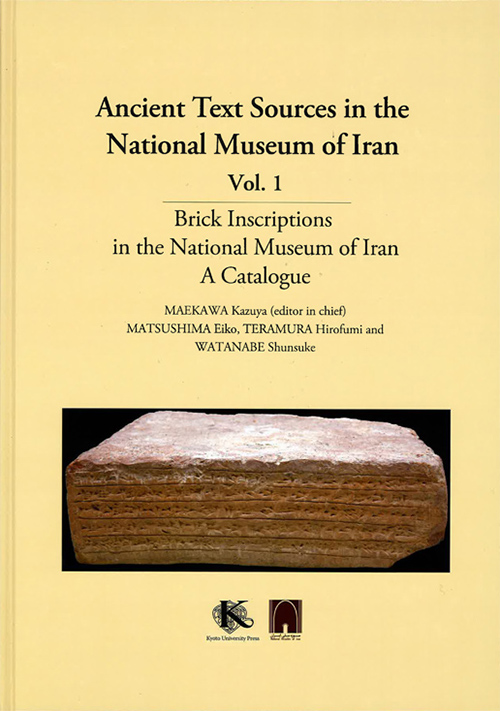ホーム > 書籍詳細ページ

The present publication is the first research achievement of the Iran-Japan Projects of Ancient Texts (IJPAT), which was started in 2011 after an MOU was concluded between the National Museum of Iran and Kyoto University.
This book comprises two parts: the first is a publication of the brick inscriptions housed at the National Museum of Iran; the second is a report of an experiment on the application of 3D scanning to cuneiform tablets.
The first part carries the photographs of the 271 inscriptions that came from Susa and Chogha-Zanbil. The texts published are grouped into four categories; (1) the inscriptions of Ur III King Shu-Sin, (2) inscriptions from the early Elamite dynasties of the first half of the 2nd millennium BC, including the reigns of the sukkal-mah, (3) inscriptions from the time of Untash-Napirisha from the middle Elamite period, and (4) inscriptions of the Shtrukid kings dated to the 12th century BC. Both the transliterations and commentaries of the texts are made by E. Matsushima. The classification of the inscriptions of Untash-Napirisha, first established by the present book, will be a useful guide for any future investigations of the ancient Iranian royal inscriptions.
The technology of 3D scanning appears to be very effectively applied to the study of cuneiform sources. From the 3D modeled data, scholars can easily decipher any seriously defaced cuneiform signs, as well as those inscribed on the corners and sides of the original tablets. The report presented by H. Teramura and S. Watanabe is the second part of this book; it proves that 3D modeling is particularly helpful for seriously damaged or non-rectangular tablets, such as in the case of the Malyan tablets.
This book comprises two parts: the first is a publication of the brick inscriptions housed at the National Museum of Iran; the second is a report of an experiment on the application of 3D scanning to cuneiform tablets.
The first part carries the photographs of the 271 inscriptions that came from Susa and Chogha-Zanbil. The texts published are grouped into four categories; (1) the inscriptions of Ur III King Shu-Sin, (2) inscriptions from the early Elamite dynasties of the first half of the 2nd millennium BC, including the reigns of the sukkal-mah, (3) inscriptions from the time of Untash-Napirisha from the middle Elamite period, and (4) inscriptions of the Shtrukid kings dated to the 12th century BC. Both the transliterations and commentaries of the texts are made by E. Matsushima. The classification of the inscriptions of Untash-Napirisha, first established by the present book, will be a useful guide for any future investigations of the ancient Iranian royal inscriptions.
The technology of 3D scanning appears to be very effectively applied to the study of cuneiform sources. From the 3D modeled data, scholars can easily decipher any seriously defaced cuneiform signs, as well as those inscribed on the corners and sides of the original tablets. The report presented by H. Teramura and S. Watanabe is the second part of this book; it proves that 3D modeling is particularly helpful for seriously damaged or non-rectangular tablets, such as in the case of the Malyan tablets.








